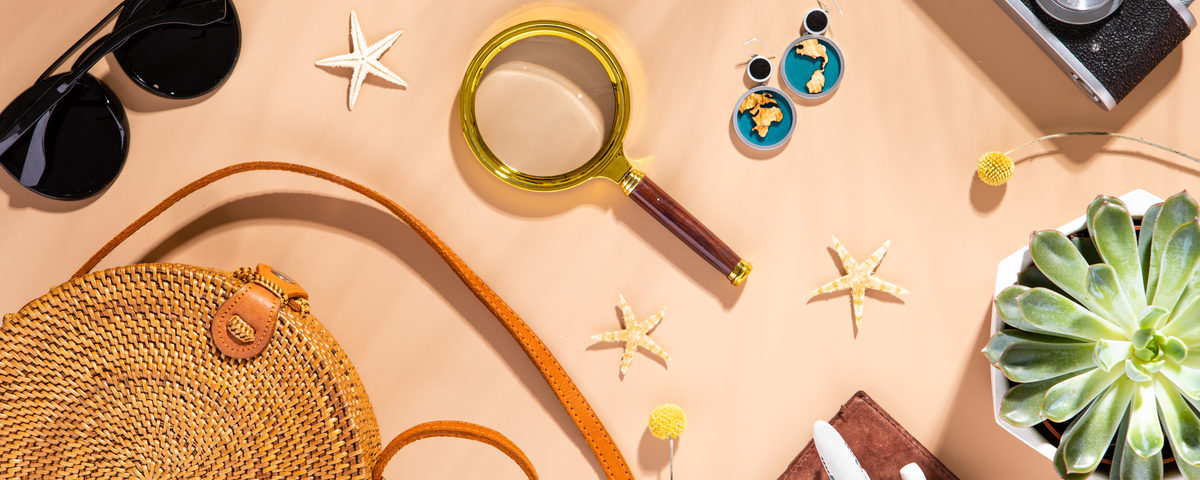Whether you’re just setting up your brand’s social media handles, or you’ve been on Instagram for a while, having a hashtag strategy is key to increasing the visibility of your travel brand. In this blog post we will tell you why you need to develop a hashtag strategy, how it can benefit your brand, how to create your strategy and which hashtags to avoid.
What is a hashtag strategy?
A hashtag strategy is basically a plane for how you will increase the visibility of your brand (and engagements on your posts) on Instagram using hashtags. It’s a comprehensive list of the hashtags you will use for each post you share to ensure your organic content is reaching the maximum amount of people each time. This list will need to be updated regular to reach fresh, new audiences.
Your hashtag strategy may be broad (a set of 100+ relevant hashtags you will dip into for each post you share) or very specific (a tailored set of 30 hashtags for each post). The more specific you can be with your hashtag strategy, the better.
The aim of building a hashtag strategy is to find hashtags that are relevant to your post, but not so popular (500,000+ posts on a hashtag is when you’re likely to see less impact of using hashtags) that your posts don’t get any visibility on them. Using a set of 30 relevant, niche hashtags can see your post’s engagement explode overnight and can really help your brand to reach the right people on Instagram.
You should regularly build on your hashtag strategy, finding new hashtags to add to your lists and use on your posts. Also, keep an eye out for ‘banned’ hashtags to ensure your posts’ reach isn’t limited!
Why do I need a hashtag strategy?
Take a look at your brand’s most recent posts to Instagram. How many of their impressions were down to hashtags? If you’re seeing a low number, or no impressions at all from hashtags then it’s time to commit to a hashtag strategy.
Putting aside some time to properly plan the hashtags you will use for your brand, and on each individual post, can result in thousands of impressions for your brand’s posts, an increased number of follows from each post and increases in the number of times your posts are shared or saved by Instagram users.
Getting your strategy right can put your brand on the social media map and help you to grow a niche following who are truly interested in your brand and what you offer. This is especially important right now while the majority of leisure travel is on pause!
By using niche, relevant hashtags for each of your posts, you’re putting your content in front of people who are searching for similar posts. It’s a great way to get the attention of your ideal customer and can help you to find out more about the style of content they enjoy seeing on social media.

How can a hashtag strategy benefit my travel brand?
The amount of people travelling for leisure purposes is greatly reduced right now. By developing and implementing a hashtag strategy you can make sure your brand is getting more visibility than your competitors, which will in turn increase the chances of travellers booking with you in the future.
Staying relevant on social media is crucial right now. The brands that do will be able to capitalise once people’s confidence is restored in the travel industry. Just because people aren’t travelling right now, doesn’t mean they’re not dreaming of it! Providing that wanderlust on Instagram can be a great way to engage future travellers, and ensure you’re the person they book with once they’re ready to travel again.
A good hashtag strategy is free marketing, it costs nothing to add the right hashtags to your posts and you’ll see the results as soon as you start doing it right. If you have great Instagram content, it’s a great way to grow your brand’s audience rapidly on the platform with no spend required.
What types of hashtags should I use for my travel brand?
When it comes to hashtags, you should go as niche as you can. This will ensure you’re targeting your ideal audience with every post and being seen by people with similar values.
For example, if you were a luxury resort in Bali, your hashtags should be focused around Bali, luxury travel, island destinations and resorts.
If you’re not sure where to start, begin by jotting down the keywords that describe your brand. From here, you can research the relevant hashtags for each of these keywords. You can find relevant hashtags on Instagram by searching your keyword and seeing what suggested hashtags come up. Try to go for a mix of popular and less used hashtags for the biggest impact, avoiding any that are really popular (1,000,000+ posts) as it’s unlikely your posts will reach the top page or even stay at the top of the recent page for long.
For each of your individual posts, you can follow the same method. For example, if the image was of yoga taking place on the beach, your keywords might be beach holiday, island destinations, wellness travel, yoga retreats. Aim to use 30 relevant hashtags on each post. This is the maximum amount of hashtags that Instagram allows you to use, and if they’re all relevant it will ensure you get maximum reach for each post you share.

Why should I avoid popular travel hashtags?
You might think using the most popular hashtags will mean your posts reach more people, but this isn’t necessarily true. Hashtags with more than 1 million posts are used by a lot of people, so when you use them as well it’s unlikely you’re going to hit the ‘top’ page unless your account has a big following (we’re talking 100k or more).
The best thing to do is to aim to use hashtags that are popular, but with 500,000 posts or less. This way you are benefitting from their popularity without getting lost in the thousands of posts uploaded using them each day.
Another thing worth mentioning is that popular hashtags can sometimes end up being banned by Instagram. This is because they often get spammed with irrelevant posts from untrustworthy accounts. If you want to see if a hashtag you’re using is banned, look it up on Instagram and it will display a message saying the hashtag is considered banned and may not show relevant posts.
How will I know my hashtag strategy is working?
The most obvious way to find out if your hashtag strategy is working is by looking at the impressions your posts are getting from hashtags. To find this, you will need to have a Business account on Instagram. Click on ‘view insights’ on your post and scroll down to see the impressions breakdown. This will tell you exactly how many are coming from hashtags. If you can’t see ‘from hashtags’ in the list, then that means your impressions from them is 0.
Once your hashtag strategy is up and running, compare the ‘from hashtags’ impressions of your most recent posts to older posts that you didn’t apply hashtag strategy to. Seeing a huge increase here is evidence that your hashtag strategy is working.
If you feel like your hashtag impressions still aren’t as high as you want them to be, it’s time to look at the quality of your content. Higher quality photos and video will perform better on hashtag pages. You could even play around with some A/B testing to see if slight variations in colour scheme or the angle of a photo change its performance for a particular set of hashtags.
Keeping testing out different sets of hashtags and different images/videos to see what performs best, and then build your strategy from there. Following this advice will really help to increase your brand’s exposure on social media and engage your target audience.
Feature image by Jealous Weekends on Unsplash
You may also be interested in…
- Why now is the best time for social media marketing and how to do it
- Will influencer marketing help brands to bounce back post-coronavirus?
- Embracing video to build your brand in times of uncertainty

